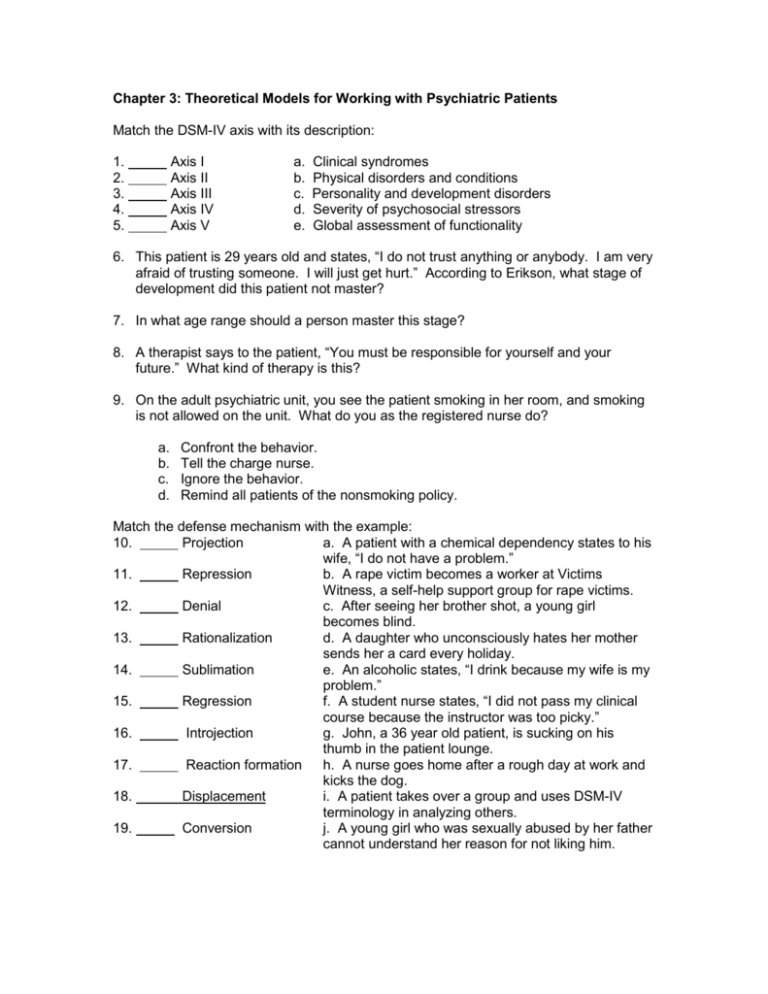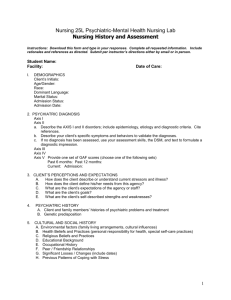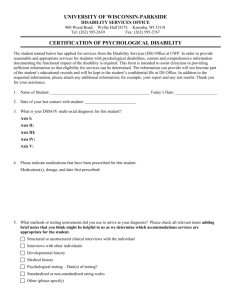Chapter 3: Theoretical Models for Working with Psychiatric Patients
advertisement

Chapter 3: Theoretical Models for Working with Psychiatric Patients Match the DSM-IV axis with its description: 1. 2. 3. 4. 5. Axis I Axis II Axis III Axis IV Axis V a. b. c. d. e. Clinical syndromes Physical disorders and conditions Personality and development disorders Severity of psychosocial stressors Global assessment of functionality 6. This patient is 29 years old and states, “I do not trust anything or anybody. I am very afraid of trusting someone. I will just get hurt.” According to Erikson, what stage of development did this patient not master? 7. In what age range should a person master this stage? 8. A therapist says to the patient, “You must be responsible for yourself and your future.” What kind of therapy is this? 9. On the adult psychiatric unit, you see the patient smoking in her room, and smoking is not allowed on the unit. What do you as the registered nurse do? a. b. c. d. Confront the behavior. Tell the charge nurse. Ignore the behavior. Remind all patients of the nonsmoking policy. Match the defense mechanism with the example: 10. Projection a. A patient with a chemical dependency states to his wife, “I do not have a problem.” 11. Repression b. A rape victim becomes a worker at Victims Witness, a self-help support group for rape victims. 12. Denial c. After seeing her brother shot, a young girl becomes blind. 13. Rationalization d. A daughter who unconsciously hates her mother sends her a card every holiday. 14. Sublimation e. An alcoholic states, “I drink because my wife is my problem.” 15. Regression f. A student nurse states, “I did not pass my clinical course because the instructor was too picky.” 16. Introjection g. John, a 36 year old patient, is sucking on his thumb in the patient lounge. 17. Reaction formation h. A nurse goes home after a rough day at work and kicks the dog. 18. Displacement i. A patient takes over a group and uses DSM-IV terminology in analyzing others. 19. Conversion j. A young girl who was sexually abused by her father cannot understand her reason for not liking him.











